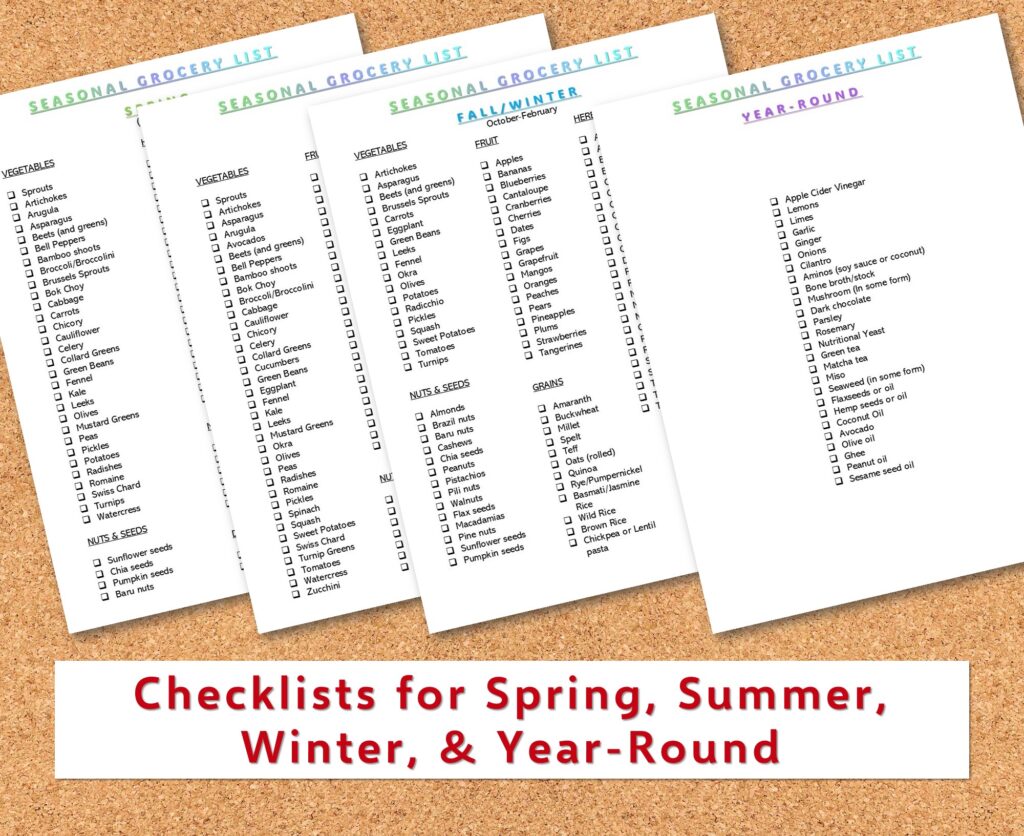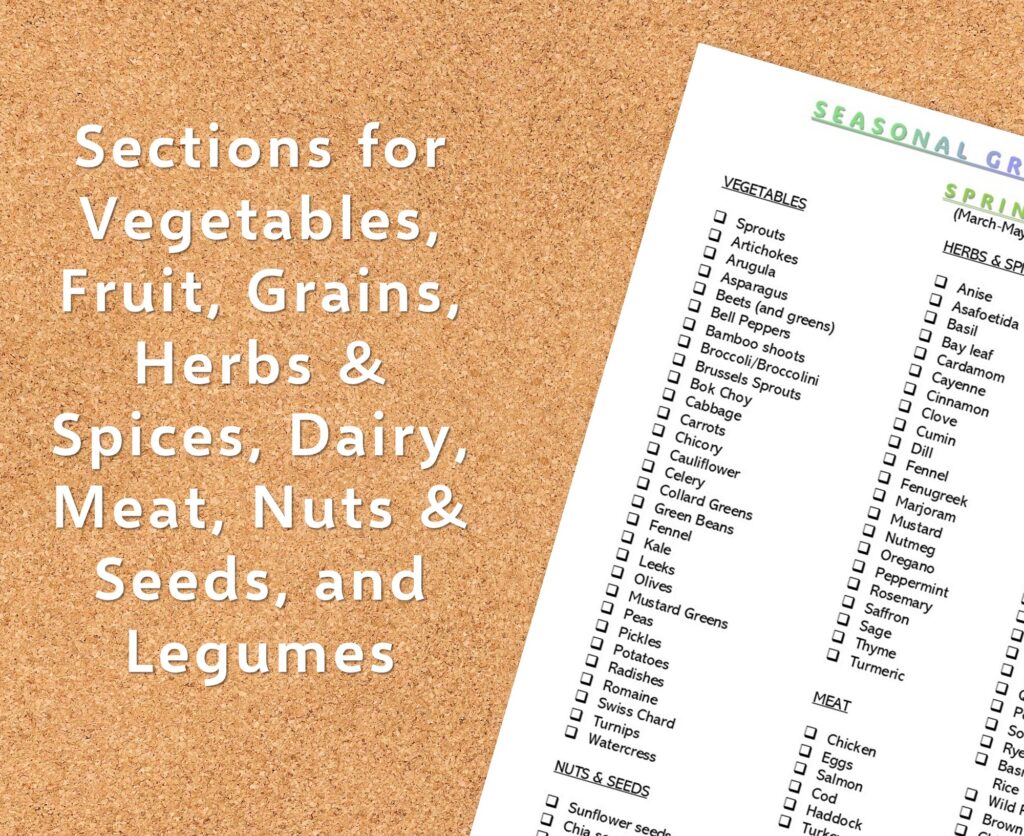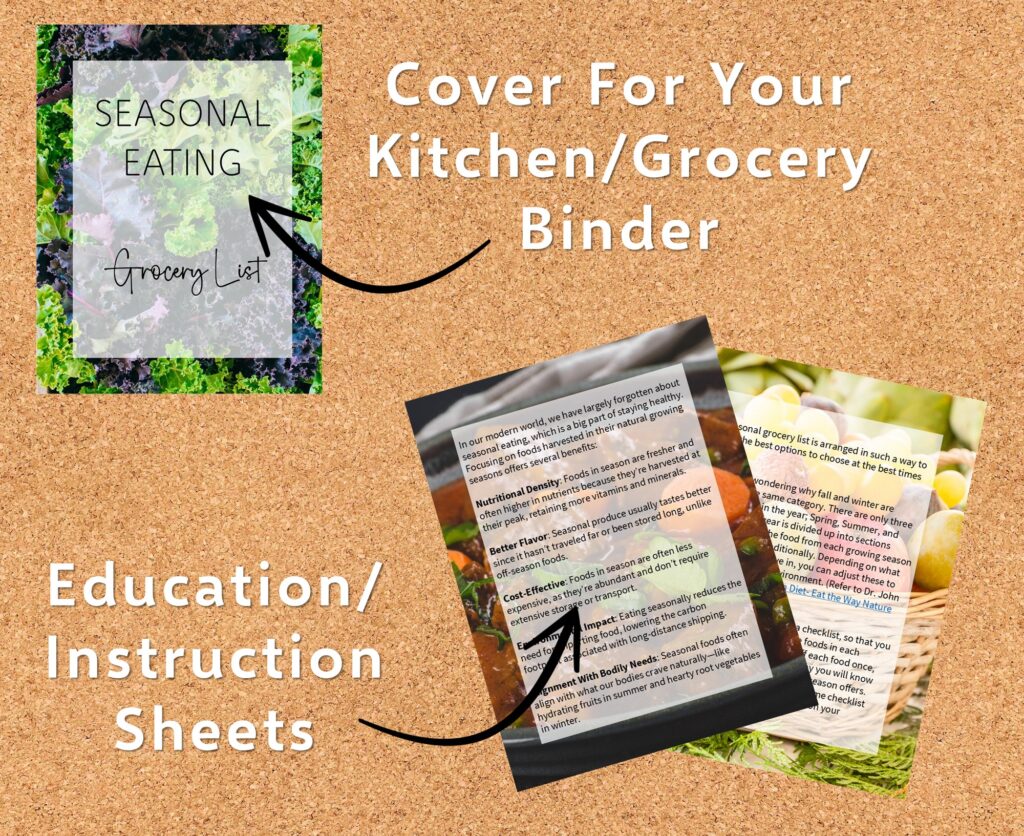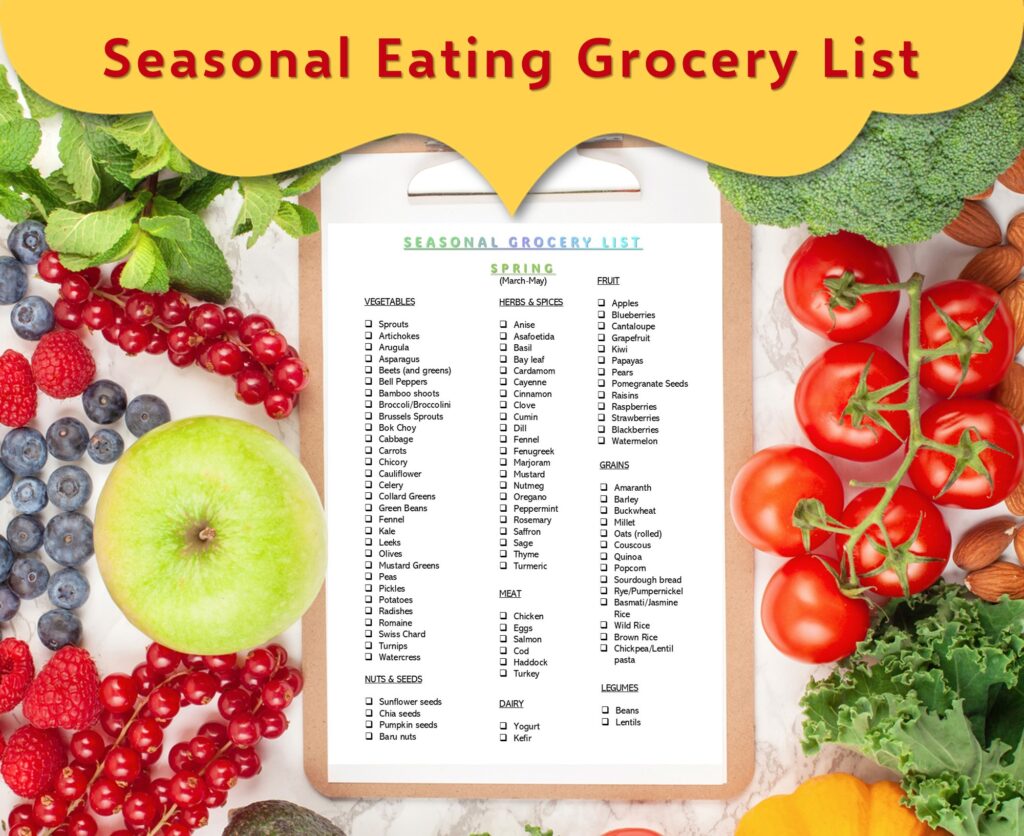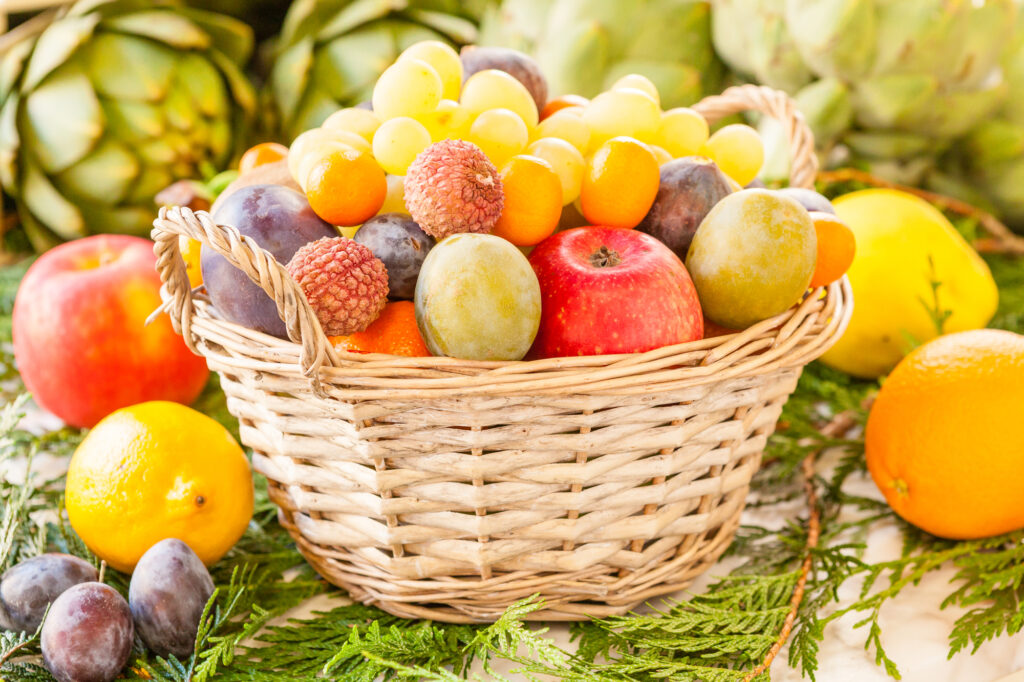
(Disclaimer: This article contains affiliate links)
Table of Contents
What Is Seasonal Eating?
Seasonal eating means enjoying produce like fruits and vegetables when they’re naturally harvested in your region, like berries in summer and root veggies in autumn, for example. Before modern refrigeration and food importing around the world, people only ate what was available locally, only when it was in season.
Seasonal eating is a way to eat more nutritiously, support your local community, reduce environmental impact, and live in harmony with nature’s cycles (my favorite part!)
Why Seasonal Eating Matters
1. Peak Flavor & Nutrition
Seasonal produce is picked at peak ripeness, meaning it tastes better and offers more vitamins, minerals, and antioxidants. For example, summer-grown broccoli can have significantly more vitamin C than its off-season counterpart.
2. Greater Variety = Better Health
Rotating through seasonal produce encourages a diverse diet, exposing you to a wider array of nutrients which is vital for overall wellness. The gut microbiome is especially improved when you introduce a wider variety of produce that is in season.
3. Supports Local Farmers & Economies
Buying seasonal, locally grown food keeps money within your community, helps small-scale farmers thrive, and encourages sustainable agriculture practices.
4. Reduces Environmental Impact
Seasonal and local produce travels fewer miles, requires less refrigeration, and relies on natural growing cycles rather than energy-intensive greenhouses.
Added Benefits
1. Mindful & Creative Eating
Following seasonal cycles turns meals into explorations, discovering new ingredients and cuisines tied to each time of year. You’ll never get sick of any one food since you will only be eating certain things at certain times.
2. Cost Savings & Less Waste
When produce is in season, it’s less expensive. Plus, fresher items spoil slower, reducing waste (Not-so-fun fact; roughly 40% of US food is wasted!)
3. Cultural & Historical Ties
Seasonal eating reconnects us with ancestral traditions, helping us to feel more connected to humanity as a whole.
How to Start Eating Seasonally
- Learn What’s in Season — Use local harvest guides from agricultural extensions or apps. I highly recommend the book 3 Season Diet by Dr. John Douillard.
- Shop Smart — Visit farmers markets, join CSA boxes, or check regional sections in grocery stores.
- Plan Recipes Around the Season — Enjoy lots of fruit in summer, nourishing soups in winter, and salads in spring.
Start Eating Seasonally Today For Only a Few Dollars
In order to help myself eat more seasonally, I created this seasonal eating grocery list for myself and now it’s one of the products in my Etsy shop available for anyone to download instantly!
This printable seasonal food printable will help you eat seasonally and improve your diet, especially with in season produce and in season fruits. Use it as a grocery list, checklist, or a seasonal eating guide.
✅ Printable PDF for use in your recipe binder, clipboard, or planner
✅ Perfect for healthy meal planning and recipe ideas
✅ Promotes healthy eating habits by focusing on fresh, seasonal produce
✅ Helps organize your shopping trips and reduces food waste
PDF includes 7 pages:
- Cover page for your binder
- 4 pages of food lists; Spring, Summer, Fall/Winter, and Year-Round. Each page includes the categories of Vegetables, Fruit, Dairy, Meat, Herbs & Spices, Nuts & Seeds, Legumes, and Grains.
- Educational page and instructions for use (although you can use this any way you like!)
